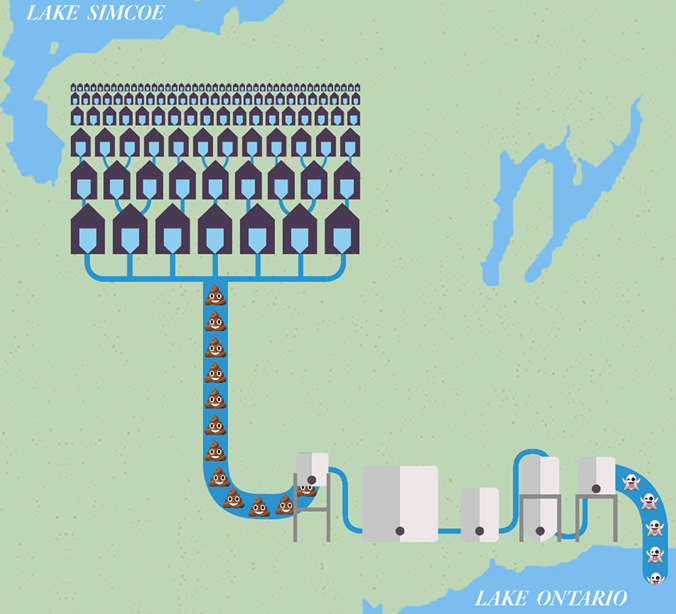 By Pepper Parr
By Pepper Parr
February 3rd, 2023
BURLINGTON, ON
The plans to build thousands of homes to meet the rising population planned for the province puts pressure on the infrastructure that will have to be built to manage the waste water. Flushing the toilet is just the start – that waste has to get to a wastewater treatment plant that may not have been built yet.
 There is another electronic newspaper that is doing some very good news reporting. Narhwal, a publication that started in British Columbia recently created an Ontario office where they have done some exceptionally good work on the property transactions that have plagued the Ford government.
There is another electronic newspaper that is doing some very good news reporting. Narhwal, a publication that started in British Columbia recently created an Ontario office where they have done some exceptionally good work on the property transactions that have plagued the Ford government.
On one particularly good series they partnered with the Toronto Star
In a recent article writer Fatima Syed reported that: “In York Region, the population is set to double by 2051. That means moving tens of millions of litres of more water from the Lake Huron watershed every day,” Fatima told me.
“Where would that wastewater go, exactly? The answer to that question has been a pressure point for 14 years. After over a decade of debating whether to build a new treatment facility, the province finally decided last fall to move more water down south to an existing treatment plant on Lake Ontario instead. To do so, it’s eyeing the protected Oak Ridges Moraine, through which it wants to expand a network of pipelines.

“Moving water from one Great Lake watershed is known as an intra-basin transfer, and it’s a big deal. For Lake Huron — and Georgian Bay and Lake Simcoe, which flow from it — it means a loss of water, at a time when levels are already often low. For Lake Ontario, it means absorbing more wastewater: treated wastewater, yes, but the water body is also coping with an unprecedented number of sewage spills, and facing other environmental pressures.
“One leak in a pipe, and there’s poop in your drinking water!” Fatima said jokingly. “Well, not exactly, but the chemicals that treat sewage could put a strain on the drinking water for the region — and we don’t want that to happen.”
“And it’s not just a question of sewage or its possible impacts on Ontario’s environment.
“It’s also about an international agreement signed in 2005 by Ontario, Quebec and eight U.S. states which explicitly bans the movement of water from one Great Lake basin to another.
“At the heart of the agreement is the health of the Great Lakes — one of the most unique water ecosystems on the globe, they hold 85 per cent of North America’s surface freshwater. Great Lakes experts told Fatima they worry Ontario’s decision will lead other signatories to wonder why they should honour the agreement when the whole region is facing intense development pressures.
“The consequences could be so dire, with two watersheds in the Great Lakes and a protected area, we have to start thinking about it now,” wrote Fatima Syed.
“If the Ford government wants to put shovels in the ground as quickly as it’s indicating … we have to start planning properly for our poop.”
The Narwhal has shown that with the right kind of funding the public will get to learn a lot more about what the various level of governments are doing.
Narwhal has managed to get funding from a number of Foundations including the Metcalf Foundation, the McConnell Foundation and the Echo Foundation.
The editorial staff is decidedly female which draws support from those who want to see more women in lead roles in the news business.
As for the waste water: Some of it might be headed for Lake Ontario; source of our drinking water. Thanks Doug


















Just read the ‘Great Lake Basin’ agreement again, this use of water is allowed within the agreement, also humans are listed as being protected (Go figure). But it got me thinking about the transfer of millions of human beings from one side of the planet to another putting a strain on the host ecosystem. By the way the clean water act was signed federally in 1972.